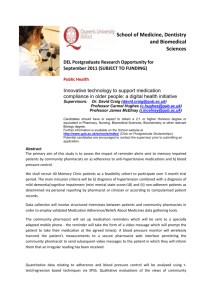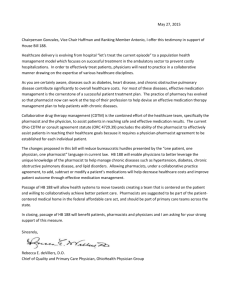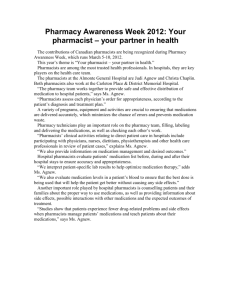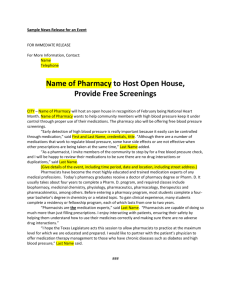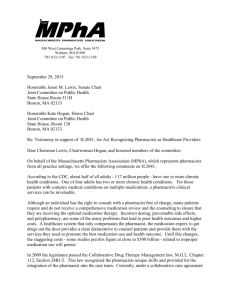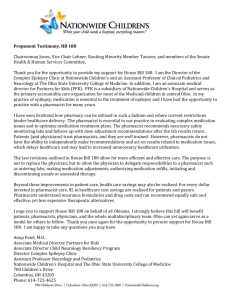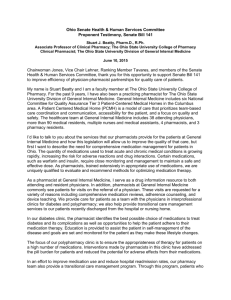500 West Cummings Park, Suite 3475 Woburn, MA 01801 781
advertisement
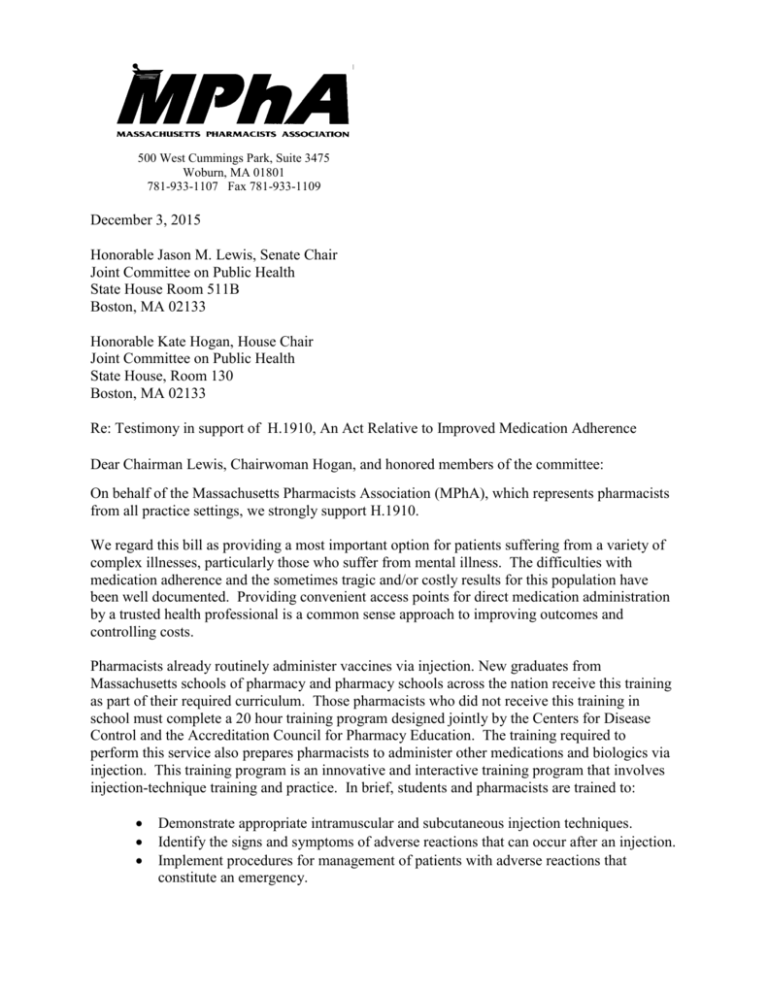
500 West Cummings Park, Suite 3475 Woburn, MA 01801 781-933-1107 Fax 781-933-1109 December 3, 2015 Honorable Jason M. Lewis, Senate Chair Joint Committee on Public Health State House Room 511B Boston, MA 02133 Honorable Kate Hogan, House Chair Joint Committee on Public Health State House, Room 130 Boston, MA 02133 Re: Testimony in support of H.1910, An Act Relative to Improved Medication Adherence Dear Chairman Lewis, Chairwoman Hogan, and honored members of the committee: On behalf of the Massachusetts Pharmacists Association (MPhA), which represents pharmacists from all practice settings, we strongly support H.1910. We regard this bill as providing a most important option for patients suffering from a variety of complex illnesses, particularly those who suffer from mental illness. The difficulties with medication adherence and the sometimes tragic and/or costly results for this population have been well documented. Providing convenient access points for direct medication administration by a trusted health professional is a common sense approach to improving outcomes and controlling costs. Pharmacists already routinely administer vaccines via injection. New graduates from Massachusetts schools of pharmacy and pharmacy schools across the nation receive this training as part of their required curriculum. Those pharmacists who did not receive this training in school must complete a 20 hour training program designed jointly by the Centers for Disease Control and the Accreditation Council for Pharmacy Education. The training required to perform this service also prepares pharmacists to administer other medications and biologics via injection. This training program is an innovative and interactive training program that involves injection-technique training and practice. In brief, students and pharmacists are trained to: Demonstrate appropriate intramuscular and subcutaneous injection techniques. Identify the signs and symptoms of adverse reactions that can occur after an injection. Implement procedures for management of patients with adverse reactions that constitute an emergency. Have a thorough and practical knowledge of Occupational Safety and Health Administration regulations for the prevention of employee exposure to bloodborne pathogens and needlestick injury at worksites where injections are administered. In addition, pharmacists obtain CPR or BCLS certification. Additional information regarding the particulars of the CDC approved immunization training program can be viewed at the American Pharmacists Association (APhA) website: www.pharmacist.com/pharmacy-based-immunizationdelivery. Respectfully, we suggest one change that we believe strengthens the potential for the outcomes that we all hope will be achieved when H.1910 becomes law. The bill as currently drafted requires that a pharmacist who will provide this service to enter into a Collaborative Drug Therapy Management agreement with a physician. Collaborative Drug Therapy Management or "CDTM" was signed into law to allow pharmacists to use their knowledge of medications and clinical skills to manage the medication regimen of a particular physician’s patients. Under these agreements the pharmacist can take a patient off a medication, prescribe new medications, or modify the dose of medications, all to give that patient the best combination of drugs that will result in the best possible outcome for that patient. Although studies suggest that clinical pharmacists who specialize in care for patients with mental illness make a positive difference in health outcomes (see attached), administering a medication ordered by a physician does not require these particular skills from a pharmacist. The bill's clear intent is to increase the number of access points for patients in the hopes that this convenience will translate into improved medication adherence. Requiring CDTM agreements for the patients of each physician becomes an unnecessary added burden. In each of the 24 states in which a pharmacist is authorized to administer mental health medications via injection, the patient is shown a list of pharmacies in his or her home and/or work vicinity and the patient is able to choose that pharmacy. The physician then writes a prescription that directs the pharmacist to administer the medication to the patient. With a requirement of a collaborative agreement, the physician would have to seek out a pharmacist in an area convenient to the patient, draft protocols, have it signed by all parties, and submit it to the boards of medicine and pharmacy. It would add a layer of complexity that we do not believe is necessary and could inhibit the number of access points for patients. Communication regarding the patient's adherence is easily and routinely provided to the physician without requiring a fully executed collaborative agreement. To provide these additional access points and convenience to the patient, we would suggest simply amending the definition of "Administer" in section 1 of Ch. 94C to add a registered pharmacist to those who may administer medications at the direction of a practitioner. If you have any questions, please do not hesitate to contact me. Sincerely, David E. Johnson Executive Vice President

